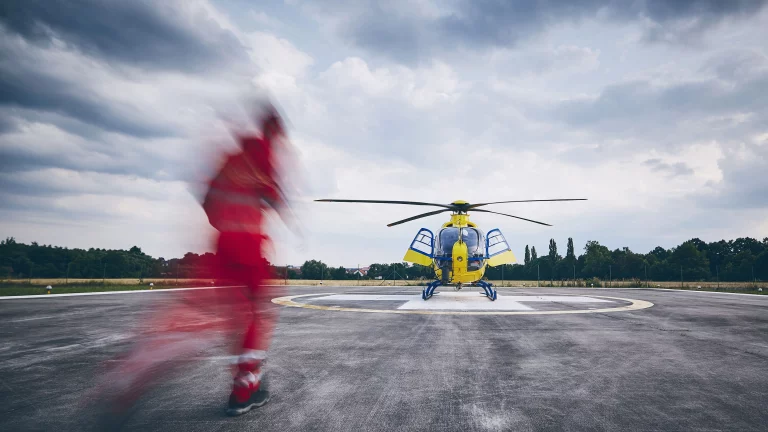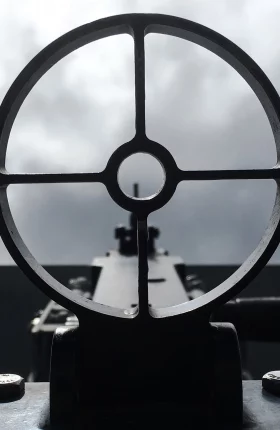On the surface, the defense industry may not look or act like the commercial aerospace industry, but it can actually learn a lot from the latter’s microeconomics.
Commercial aerospace is all about longevity and continuity. By keeping successful programs alive for decades, unit costs for production shrink and companies reap huge economies of scale. They also tie customers to their products by providing ongoing support and a steady stream of improvements over many years. The deep aftermarket they provide—not just in modifications but also in parts, maintenance, and performance improvements—is a source of tremendous profitability. It’s also a buffer against the volatility of demand cycles.
Defense contractors have long followed a different model: their single customer sets requirements, and the companies earn their keep primarily on a cost-plus basis. Companies pursue the next big program, hoping geopolitics and the political winds work in their favor. If a program doesn’t sell, they settle for the dwindling revenues generated by older programs. Even the most skilled leadership can’t stop the vicious cycle of attrition that begins once the second round of orders fizzles out: production invariably gets cut, which in turn drives up unit costs and eventually pushes programs to extinction. In following this model, defense OEMs unnecessarily shorten the lifespan of otherwise worthy programs, and they lose out on ancillary, but significant, sources of income as a result.
Yet there’s no real reason for this model. The defense business need not—and should not—settle for limited returns.
In reality, defense and commercial aerospace have more commonalities than differences. Both invest enormous sums and many years to develop their major programs. Both have dialed-in production lines, deep supply chains, products whose spare parts are high-value, and similar operations. Traditional weapons systems are, like commercial aircraft, industrial equipment. The process and engineering solutions to the challenges posed by these highly engineered products are the same as those in commercial aviation. So by applying the winning strategies of commercial aerospace, defense contractors could unlock significant economic gains and compete on a higher level.
What is Commercial Aerospace Doing Right?
Given their staggering development costs, it almost defies logic to think that airplanes could ever be profitable. Designing the Boeing 787 and its components (engines, control systems, subsystems), building and testing prototypes, and constructing the manufacturing facilities came to well over $20 billion. Such investments often take a decade or more to reach the break-even point. However, the programs and their aftermarkets last for four, five, or even six decades. For more than 80% of their lives, these programs are solidly profitable.
The deep aftermarket provided by commercial aerospace is a source of tremendous profitability.
In commercial aerospace, longevity is central to the business model. Not only does production last for decades, individual planes fly for decades. The built-in demand for parts and modifications ensures that manufacturers’ investment is recouped many times over. Even when discounted for time, the profit flowing from the aftermarket is sufficient to make commercial aviation very attractive. On a net present value basis, the returns far outweigh the cost of capital.
Consider these other long-running success stories:
- The Airbus A320 was first produced in 1988. Its latest engine option was introduced 28 years later, in 2016. The A320 has been a spectacular success, and most observers expect it to have a life span of at least half a century.
- The McDonnell-Douglas DC-9 is one of the longest-lived aircraft still in operation. It morphed into the MD-80, then the MD-90, and eventually became the Boeing 717. The DC-9 began flying in 1965 and is still flying today. Production ceased in 2006, after 41 years.
- The GE CF6 engine (originally the TF39) was developed to power the US Air Force’s C-5 military transport, which first flew in 1968. The CF6 powered the DC-10 starting in 1970. It was also adapted as the core of the LM stationary engine series, the highest-volume gas turbines ever made. Continual reinvestment has produced the CF6-6, -50, -80A, -80C2, and -80E. After fifty-one years, it is still being produced for multiple airliners and transports.
- Boeing’s first 737 went into service in 1968. Significant investments and new technologies have brought many versions and many improvements. The current order book for the 737 Max, the fourth-generation 737, exceeds 4,500 planes. The 737 could easily remain in production for more than 70 years.
- The Boeing 747, which first flew in 1969, was originally expected to sell no more than 400 units. As of July 2018, nearly 50 years later, 1,548 have been sold.
- Boeing’s 767 first flew in commercial service in 1982. In 2018—36 years later—Boeing announced that it was increasing the rate of production of 767s.
Defense has had its success stories, to be sure: the B-52, the F-16, the C-130, the US Navy destroyers of the Arleigh Burke class. Yet these programs are the exceptions; most defense programs have nowhere near the longevity of the commercial successes.
In the commercial sector, longevity is based on derivatives, and the economics of the aftermarket create the profit basis for derivative aircraft. Modifications change some key systems and components, but not all. The aftermarket continues to grow as the derivatives add volume to the installed base. The most successful commercial aviation participants think strategically about which parts to change, and about who will therefore access the aftermarket. The customer support system reinforces program longevity and the customer’s incentive to maintain a consistent fleet. Parts availability, maintenance programs, and performance improvement investments are managed by the OEMs to deliver flight hours economically. That, in turn, completes the cycle that keeps the enormous installed base of planes flying, which is what drives the aftermarket.
Three Key Questions
Certainly, economics is not the primary concern of defense departments. Military equipment must be capable of overpowering an adversary. The requirements for that capability must ultimately outweigh the powerful industrial economics of incumbency, installed production lines, and supply chains.
Still, as the requirement setters, defense departments need to consider three key questions:
- Does the portfolio contain derivative or modernized versions of already fielded equipment that can meet current and projected military needs?
- Do the derivatives truly bump into a structural limitation in the aircraft that necessitates an all-new design?
- And does the requirement justify the cost of an all-new design?
The answers to these questions help answer an even bigger question: How much investment can be reallocated away from uneconomic program development to focus instead on the most critical capability areas?
Six Takeaways for Defense
What lessons can the defense industry glean from its commercial counterpart? We’ve identified six.
- Buyers: Think “modernized” instead of “brand new.” When making major acquisition decisions, defense departments ought to compare the performance and costs of a new platform with those of a modernized version of the existing product. With existing programs, they should identify the areas in which innovation counts most—and then focus their contractors’ efforts there. Commercial OEMs, for example, concentrate on the engine and the wing characteristics, generally leaving other systems unchanged. Defense departments could encourage contractors to focus on the mission system in flight control, or direct shipbuilders to zero in on electrical systems that support combat laser technology.
- Manufacturers: Imagine the long-term economics. Manufacturers should conceive programs for the long term—and make business-case decisions with the full program-life economics in mind. Production will generally last longer than originally anticipated, and weapons systems will require more sustainment than originally planned. Keeping the production lines operational not only creates procurement flexibility but also makes the cost of sustaining the program more manageable.
- Redefine the threshold for pursuing new platforms. Offer a new platform only when an existing platform faces a structural or technical limitation that makes it impossible to meet the customer’s new requirements.
- Build modularity into new programs. Some amount of inefficiency is unavoidable in modular design. Although in-efficiency is a bane to engineers, defense companies should nevertheless develop new programs in a modular way. Modularity allows for cost-effective modernization and performance improvements. Platforms may be in service much longer than originally anticipated; built-in modularity makes a product inherently more upgradeable, and the ability to sell upgrades is valuable.
For example, if flight control is modularized, the OEM can later add autonomy simply by swapping out the box. For a ship, if containerized gas turbine units are modularized, the customer can effectively install a higher-power module later on.
Thus, a sacrifice in efficiency is offset by the ability to update faster—no minor issue when you consider that, often, by the time a project finally gets to market, an adversary has made it obsolete.
- Overdesign in critical areas where innovation and performance requirements will likely grow. The remarkable longevity of the B-52 is a direct result of its overdesigned load capacity and range, features that made the aircraft one of history’s most versatile. Building extra height into the hangar decks of aircraft carriers has made some older vessels big enough to accommodate today’s larger aircraft. Because the electrical system requirements of ships and planes grow faster than other requirements, manufacturers should anticipate higher electrical-load needs in mission systems and weapons.
- Unleash the significant profit potential of parts. Significant value can be tapped from parts supply streams, and manufacturers—the original designers and creators of the supply chain—hold the advantage in capturing these future profit pools. For the past 70 years, Boeing has maintained steady revenue streams through its parts sales. Recently, the company created a separate services unit to serve both commercial and military customers, a strategy also designed to mitigate the impact of cyclical volatility in both sectors. Clearly, providing an active market in parts sustains program life; we believe not only that OEMs should build such businesses but also that defense buyers should require them to do so.
Significant value can be tapped from parts supply streams, and manufacturers hold the advantage in capturing the future profit pools.
Attention to the long-term economics of the platform is deeply ingrained in the commercial aerospace mindset. All of the lessons we point to here reinforce that perspective. And, when applied together, they create a virtuous circle effect. For defense contractors, this way of thinking is foreign; it will take conscious, deliberate recognition and alignment to drive the needed emphasis and focus.
Defense departments around the world are actively looking to develop more capability at lower expense. One hundred years of intense competition in commercial aerospace—and the resulting survival-of-the-fittest operating environment—provide clues for how to accomplish that goal. By stretching the performance and life of their existing platforms, defense departments can steer more of their investment toward the game-changing applications that existing weapon systems cannot hope to address.






